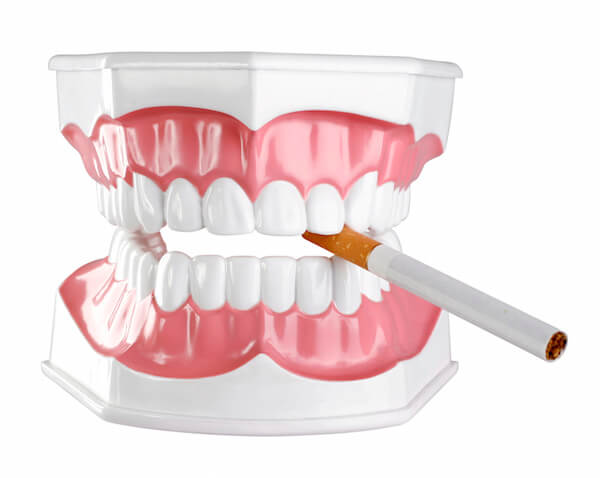
How Smoking Affects Periodontal Health
It’s common knowledge that smoking causes respiratory problems and cancer but did you know that smoking affects periodontal health? At Vero Implants and Periodontics, we want to ensure that our treatments are curing you of periodontal disease by educated you on potential hindrances.
Scientific evidence has shown that smoking has an addictive effect on the progression of periodontal disease. It’s also been shown that smoking is detrimental to healing after periodontal treatment.
In the United States, smoking is responsible for approximately one in five deaths. In 1963, the per capita consumption of cigarettes was 4,354. That number consistently dropped resulting in a per capita consumption of 1,979 in 2002. Despite the drop in cigarette consumption, smoking still costs the economy $150 billion in annual health care costs and loss of productivity.
As for its affect on periodontal disease, smoking complicates the treatment of the disease. It’s probably the most significant and modifiable risk factor for this particular ailment. The rate of periodontitis among those who have never smoked is 4.9 percent as opposed to 10.5 percent for former smokers and 15.6 percent for current smokers.
Of the 8.1 million cases of periodontitis in the United States, more than half can be attributed to cigarette smoking. Studies have shown that the effects seem to be dose-related because heavy smokers exhibit a significantly greater risk of tooth loss from periodontal disease than either non-smokers or light smokers.
How Smoking Affects Periodontal Health
One hypothesis as to why this seems to be the case is that the periodontal pockets of smokers tend to be more anaerobic, living without air, compared to nonsmokers. This type of environment could conceivably promote the growth of Gram-negative pathogens, which are resistant to treatment, in the plaque between the gums and the tooth.
Interestingly, there is no significant difference in gum inhabiting bacteria between smokers and non-smokers which has led researchers to suggest that smoking’s effect may be on the host response, the gums’ defense mechanism. This essentially means that the gums of non-smokers are more likely to fight the disease than the gums of smokers.
There are two ways that the host response can be affected by smoking. One is that it could impair the normal functions of the host response. While the gums would generally fight the disease, smoking would deter the gums from neutralizing the infection. The other way is that it may cause destruction of surrounding healthy periodontal tissue due to the gums’ response.
There have been several studies that have indicated that the effect of smoking on periodontal tissues may involve both of these. Smokers have depressed T-helper lymphocytes, which are an important factor in the immune system fighting infection. Also, the host requires functional neutrophils to battle bacterial infections. Studies have shown that tobacco smoke has a detrimental effect on neutrophil functions.
Signs and Symptoms
While there hasn’t been a demonstrated cause and effect, there is a correlation between smoking and acute necrotizing ulcerative gingivitis, known as ANUG. This disease results in pain of the gums, bleeding gums, bad taste, bad breath, and swollen lymph nodes among other ailments. Treatment of ANUG usually consists of mechanically removing dead tissue from the wounds in addition to antibiotics.
Another oral change that is caused by smoking is nicotinic stomatitis, commonly known as smoker’s palate. It can be detected by the inflammation of prominent mucous glands and a reddening spread over the area. Another characteristic is a wrinkling of the roof of the mouth often described as a “dried lake bed.” While there is no direct cause and effect yet, the fact that these lesions dissipate in those who quit smoking has led many researchers to claim this as the cause and effect.
Potential Causes
Nicotine is the most active compound found in tobacco. It can enter the body orally through the mucous membrane and skin or it can be inhaled via the lungs. It’s also highly addictive. Only 2.5 percent of the 34 percent of smokers that attempt to quit are successful.
Nicotine has a particularly detrimental effect on periodontal cells. It’s been shown to hinder the growth of gingival fibroblast, a cell that produces collagen and other fibers, which are necessary building blocks for the tissues that surround and support teeth. It also causes numerous defects for affected cells such as decreased growth, damaged cell membranes, and atypical shapes.
While researchers continue to study exactly how smoking is a cause of continued periodontal disease, there’s no question the two are linked. Smoking directly negatively impacts the treatment of the disease by hindering the gums from attacking the infection. So don’t let the habit of smoking steer you away from periodontal health.